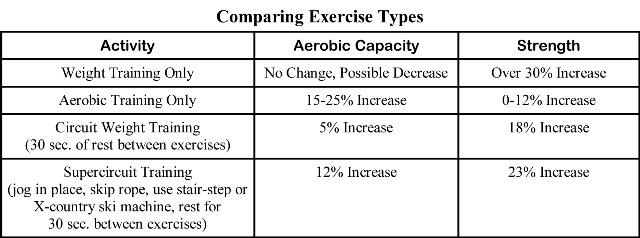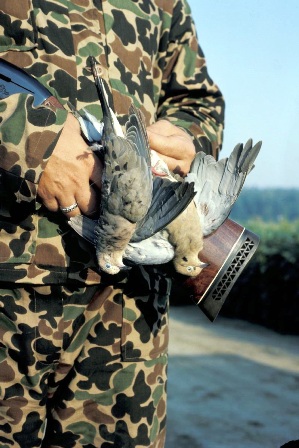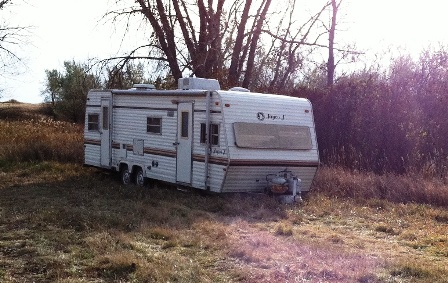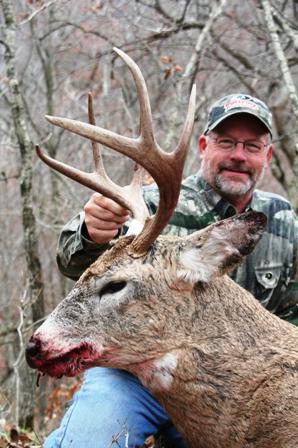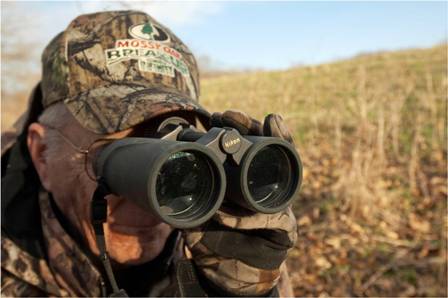By Bob Robb
Elk season is nearly upon us. Are you wondering how to get your body in shape for the hard work ahead?
Here’s how!
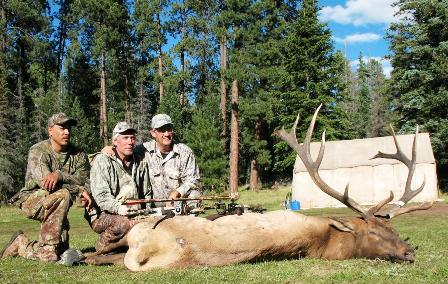
Dreams of a whopper bull like this one from Arizona ought to be plenty of motivation to get in shape.
I made my first wilderness backpack hunt in 1968, at age 16. It remains my favorite way to hunt big game. Since then, I’ve learned two things – the mountains don’t care that you’re getting older, they’re still steep and tough; and waiting until the week before opening day is too late to train your body for what lies ahead.
The most important thing in wilderness hunting is being fit enough to get the job done. That means improving your aerobic capacity. Aerobic literally means “with oxygen”, which is the fuel that drives our bodies. Simply put, the more oxygen your body can process in a given amount of time, the more work it is able to do. To be able to hunt longer and harder, you have to train your body for the challenge.
Here are Six Steps to Elk Hunting Fitness:
1) Have a Medical Examination
If you haven’t been exercising regularly, visit your doctor for a complete check-up. This is especially important if you’re over 40 years of age. Once he gives the OK, you’re ready to start.
2) Find Your “Target Heart Rate” (THR)
Everyone needs to exercise at the correct heart rate to get the maximum cardiovascular benefit and stay safe. That’s what your target heart rate and training zone are. During exercise, most experts agree that you should exercise with a heart rate between 55-85 percent of your maximum heart rate. You can find lots of information about this online, but basically, here’s all you do.
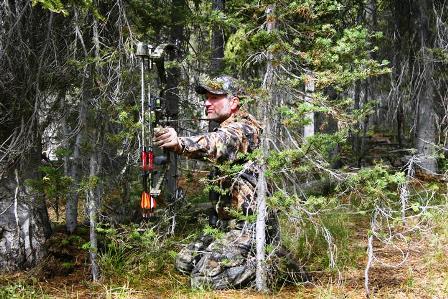
Proper fitness helps you be ready to shoot from any position.
Say you are a 40 year old man. Subtract your age from 220. Take that number and multiply it by .55, then multiply the same number by .85. In this case, 220 – 40 = 180. 180 x .55 = 99. 180 x .85 = 157. This means that during exercise your heart needs to beat above 99 beats per minute to provide tangible aerobic benefit. In this example, 157 is 85 percent of the maximum heart rate; to stay safe, don’t exceed that. In my own training program, I try to get my heart beating at between 75-85 percent of my maximum.
You must also keep your heart rate in the training zone for a minimum of 20 minutes – but the longer you are “in the zone”, the faster your fitness level will improve. The exception is when doing interval training, in which you go all-out until you can go no more, then walk until the heart rate goes below the 55 percent of maximum level, then repeat a few more times.
It is important to note that achieving the minimum training effect – 20 minutes at or above your THR four times/week – is just that, the minimum. The longer and harder you train, within reason, the better shape you’ll be in. Just remember to start slowly and work your way up. In physical fitness, as in all good things in life, there are no short cuts. Only a sustained effort over time will produce the results you seek.
3) Choose an Aerobic Exercise
Aerobic exercises must do two things. They must get your heart pumping at your THR. They must also be an activity, or combination of activities, that interest you enough so you’ll stick with it over time. Examples: Jogging, swimming, bicycling, walking, jumping rope, and roller skating are all good ones. The step aerobics classes so popular at local health clubs, are an excellent way to both improve your overall aerobic capacity and tone up your muscles.
You can incorporate part of your training into your daily life, too. Instead of the elevator or escalator, take the stairs. When walking to and from the office, walk briskly. Don’t park as close to the store as possible, park in the back of the lot. Begin consciously thinking about ways to make your body work, every day.
4) Add Strength and Flexibility Training
Aerobic exercise is great, but it isn’t enough. You need to train your muscles and increase flexibility, too. This means weight training or calisthenics: push-ups, pull-ups, sit-ups, and stretching. When using weights, concentrate on the main muscle groups – legs, back, shoulders, arms, chest, and stomach. However, don’t lose sight of the fact that the most important muscle in your body is your heart. It is best strengthened through aerobic exercise.
5) Start Now!
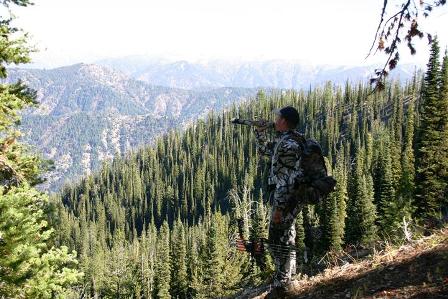
Looking at mountains like this will discourage an out of shape hunter, but invigorate a hunter who comes prepared.
While it’s never too late to begin, each day you wait to begin your conditioning program is one day closer to opening day. Starting a regular training program three months prior to a wilderness hunt is enough time to measurably increase your ability to navigate the mountains. Six months is better.
6) Specificity Training.
In the beginning you’ll want to concentrate on general fitness. However, as hunting season draws near, it’s time to add what exercise physiologists call “specificity training”. For example, because wilderness hunters spend lots of time hiking and climbing while carrying a loaded pack, they should include specific exercises that simulate these activities in their basic fitness program.
In early summer I go for long walks, starting out for an hour or so at a good pace wearing a 20-pound day pack. As opening day gets closer, I start carrying my backpack with increasingly heavy loads, working up to 70 pounds, which is about what my camp and a boned-out elk quarter will weigh. I don’t carry that every day, but try to get my muscles used to that load. It’s also very, very important to train not just on flat ground, but to also to climb. Stadium steps, hills, and the stair machine at the gym all add specificity to your training.
What Are You Waiting For?
Today receiving professional advice and guidance to achieve a fitness goal is as easy as joining a local health club, YMCA, or signing up for a class at the local college or other accredited institution specializing in physical fitness. Most employ trained professionals who can help you design an exercise program to meet your specific goals, as well as help keep you motivated.
Finally, the easiest approach to hunting season fitness is to maintain a year-round program – especially as you get older. Sure, there are days I don’t want to drag myself to the gym or go out for a run. When that happens, I dream about that big bull I’m going to find this fall, living in some out-of-the-way backcountry hellhole.
Unless I stick with the program, hauling my body to where he lives will be out of the question, and that’s simply not acceptable to me. How important is it to you?
***
About Bob Robb
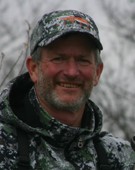 For over two decades, Bob’s articles and photographs have appeared in most major outdoor magazines. Currently he is editor of Whitetail Journal and Predator Xtreme magazines. Bob was founding editor of Petersen’s Bowhunting magazines, and the author of many books, including The Field & Stream Bowhunting Handbook, and The Ultimate Guide to Elk Hunting. Bob sees the value of super-sharp, lightweight Havalon knives.
For over two decades, Bob’s articles and photographs have appeared in most major outdoor magazines. Currently he is editor of Whitetail Journal and Predator Xtreme magazines. Bob was founding editor of Petersen’s Bowhunting magazines, and the author of many books, including The Field & Stream Bowhunting Handbook, and The Ultimate Guide to Elk Hunting. Bob sees the value of super-sharp, lightweight Havalon knives.
Editor’s Note: For Bob Robb’s Basic Fitness Program for Hunters,
come back soon!
For more articles by Bob Robb, click here.
And don’t forget the best skinning knife for that bull elk.
7,633 total views, 1 views today
 For over two decades, Bob’s articles and photographs have appear in most major outdoor magazines. Currently he is editor of Whitetail Journal and Predator Xtreme magazines. Bob was founding editor of Petersen’s Bowhunting magazines, and the author of many books, including The Field & Stream Bowhunting Handbook, and The Ultimate Guide to Elk Hunting. Bob sees the value of super-sharp, lightweight Havalon knives.
For over two decades, Bob’s articles and photographs have appear in most major outdoor magazines. Currently he is editor of Whitetail Journal and Predator Xtreme magazines. Bob was founding editor of Petersen’s Bowhunting magazines, and the author of many books, including The Field & Stream Bowhunting Handbook, and The Ultimate Guide to Elk Hunting. Bob sees the value of super-sharp, lightweight Havalon knives.



